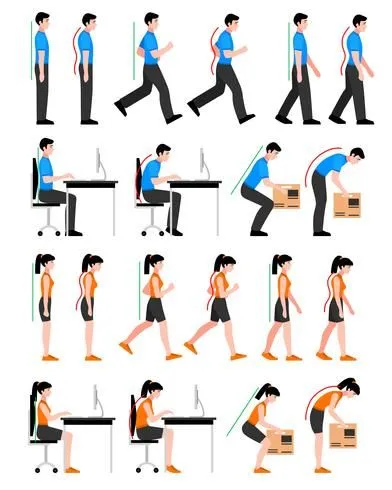Postural Corrective Exercises
Postural corrective exercises are a valuable component of rehabilitation programs aimed at addressing different types of injuries, especially those related to musculoskeletal issues. These exercises focus on improving posture, strengthening weak muscles, and restoring proper alignment and movement patterns. Here’s how they can help with injuries:
- Alignment Correction: Postural corrective exercises target the muscles responsible for maintaining proper alignment of the body. This is crucial for individuals who have developed poor posture habits due to factors like prolonged sitting, repetitive movements, or injury. By strengthening the muscles that support good posture, these exercises help realign the body and reduce strain on joints and muscles.
- Muscle Imbalance Correction: Many injuries occur due to muscle imbalances, where certain muscles are stronger or tighter than others. This can lead to compensatory movements and increased stress on certain areas of the body, predisposing individuals to injury. Postural corrective exercises aim to correct these imbalances by targeting both weak and tight muscles, promoting symmetry and optimal functioning throughout the body.
- Pain Relief: Poor posture and muscle imbalances often contribute to chronic pain, especially in the neck, shoulders, back, and hips. Postural corrective exercises can help alleviate pain by addressing the underlying causes. Strengthening weak muscles and stretching tight ones can reduce muscle tension, improve joint mobility, and provide relief from discomfort associated with musculoskeletal conditions.
- Improved Functionality: Injuries can compromise movement patterns and limit functional abilities. Postural corrective exercises not only help rehabilitate injured tissues but also enhance overall functionality by promoting proper movement mechanics. By restoring optimal posture and alignment, individuals can move more efficiently and perform daily activities with greater ease and reduced risk of reinjury.
- Prevention of Future Injuries: Engaging in postural corrective exercises can also help prevent future injuries by addressing underlying biomechanical issues and reinforcing good movement habits. By consistently practicing these exercises, individuals can maintain better posture, muscular balance, and joint stability, reducing the likelihood of sustaining injuries during physical activity or daily tasks.

